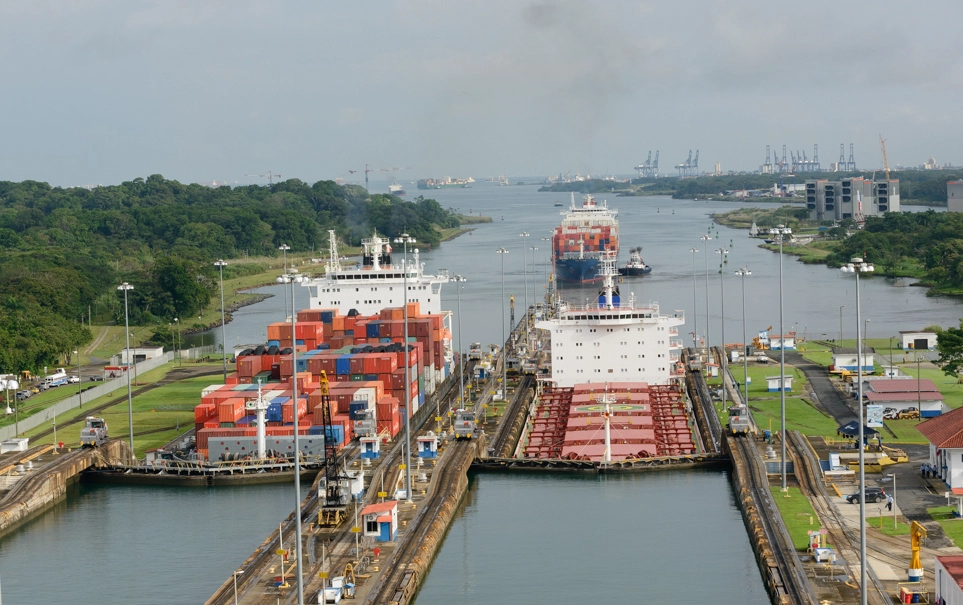During the second half of 2023, the lack of water for the normal operation of the Panama Canal, as well as the losses due to the reduction in the passage of ships have dominated the headlines. With this, the atmospheric and oceanographic phenomenon of El Niño entered the public limelight as one of the greatest threats to national security. However, the link between environmental deterioration and the country’s economy is not a new concern and has been on the national agenda since the 1970s. Panama’s environmental institutions received their greatest impetus as a result of the concern for the future of the Panama Canal, with its origins on the shores of the Alajuela Reservoir and in the shadow of the Ministry of Agricultural Development (MIDA). Despite these efforts, the fragmentation and marginalization of management have persisted, to the point that we are facing the worst projections of the last fifty years.
Although Panama has historically lacked an adequate environmental institutional framework, the country depends on its natural resources and especially on its extraordinary abundance of water resources that sustain the operation of the canal. Moreover, it depends on the production of food for export and national supply, the generation of hydroelectric power that to this day dominates the energy matrix, and the supply of drinking water for the population.
A historical problem
Until the mid-20th century, natural resources, including forests and water, were not considered limiting factors for economic growth. However, the advance of the agricultural frontier, the migration of people to urban areas, and even the global processes of pollution and changes in weather patterns have caused an increasing deterioration of the environment. All these issues today threaten the economic and social sustainability of the country.
The current administration of President Laurentino Cortizo, recognized from the beginning the serious environmental challenge and especially the need to ensure the water necessary for the operation of the Canal. With the election of a new administrator for the Panama Canal Authority (ACP), the proposal for a new reservoir on the Indio River west of the Canal was reaffirmed, as well as the possible interconnection with the Bayano Reservoir in East Panama. But on the other hand, the Government cooled the efforts that had been advanced in the previous government of Juan Carlos Varela (2014-2019) to move forward with the National Water Security Plan 2015-2050; including the adoption of urgent measures to address the state of emergency declared with the past El Niño episode between 2015-2016.
In any case, the Panama Canal continues to be autonomous and of national interest, which gives it an unusual scope to operate beyond political differences. Proof of this has been the political consensus on the proposal to dam the Indio River during the current electoral campaign and the repeated proposals to extend the ACP’s mandate beyond the operation of the interoceanic waterway. Indeed, during the administration of Juan Carlos Varela of the Panamanian Party (2014-2019), the ACP was even authorized to undertake water studies on the use of water in basins very distant from the canal route, such as the La Villa, Perales, Parita and Santa María rivers.
Consequences on the Canal
Since the Canal expansion was inaugurated in 2016 and until 2023, when one of the most severe episodes of the El Niño phenomenon occurred; the number of transits per year had followed a trend similar to that of the last twenty years. Despite this, and thanks to the new locks, tonnage had been increasing very rapidly until 2021 in response to the increased cargo-carrying capacity of the new generation of Neo-Panamax vessels, which began to cross the waterway when the expansion was inaugurated.
While it is difficult to assess whether the drop in both transits and tonnage in 2023 and early 2024 will impact long-term trends, it is clear that water supply has been recognized as an important factor in the long-term operation of the Canal. It should also be noted that this has affected both Panamax and Neo-Panamax vessels which may further affect the amount of tonnage in the future. The reduction in Canal transits is also having an impact on world trade and economy, adding to the uncertainties that have impacted world maritime trade in recent years.
In addition to the potential economic losses and transit restrictions resulting from water shortages, citizens are suffering from the irregular supply of potable water, especially in the West Panama Province. In April 2023, water shortage protests dominated the headlines at the end of the dry season, which reinforced the ACP technicians’ opinion on the need to increase supply with the Bayano and Rio Indio initiatives.
Despite the instability generated by the lack of water and other basic services, the Government has not proposed a comprehensive solution to this problem beyond the completion of infrastructure works and the sporadic reduction in consumption. Consequently, this will be a priority for the next administration agenda that takes office in July 2024.
Furthermore, a large part of the public perceives that the Ministry of Environment and other state institutions cannot respond to environmental concerns, according to the results of the CIEPS survey on distrust of state institutions. In environmental matters, this is particularly serious given that most citizens (93.3%) identify environmental care as the main characteristic of being a good citizen. The lack of response from the Ministry of Environment at any level (local, provincial, or national), has awakened a strong rejection of the institution channeled mainly in demonstrations in the streets, media, and social networks.
In response, during this period, coordination between the Ministry of Environment, the Public Prosecutor’s Office (environmental prosecutors), and the National Police has increased with the hiring of officials, the opening of new offices, and investment in infrastructure. Despite this, the results have not been encouraging, as everything seems to indicate that wildlife trafficking, the agricultural frontier, and the deterioration of environmental quality continue to advance, especially in urban areas, landfills, and mining areas.
So far, none of the previous administrations has responded to the public’s concern about the fate of the Ministry or the Inter-Institutional Environmental System (SINIA), which should guarantee intersectoral management. This is distressing in the face of cyclical crises such as the current El Niño episode, and global challenges such as climate change, persistent organic pollutants, and biodiversity erosion.
The current crisis will have a significant impact on the national economy due to the decrease in Canal traffic, but for the residents of La Chorrera and other towns in West Panama, lack of water has become the new normal. In a few years, likely, water will not be enough to supply the growing urban sprawl extending from the capital.
*Translated by Janaína Ruviaro da Silva from the original in Spanish.













